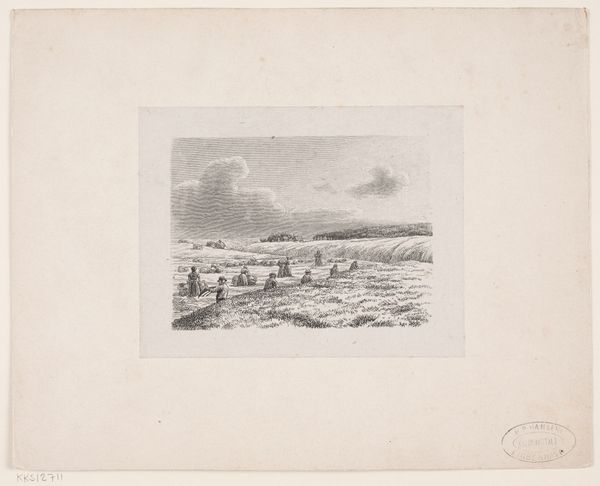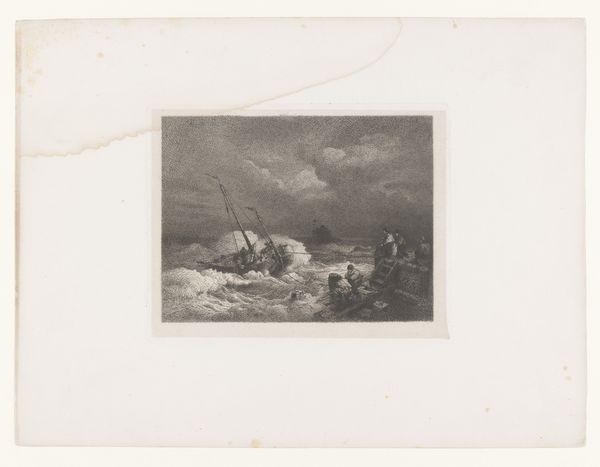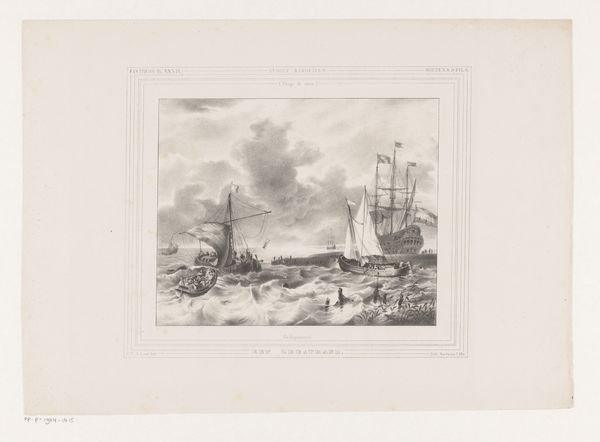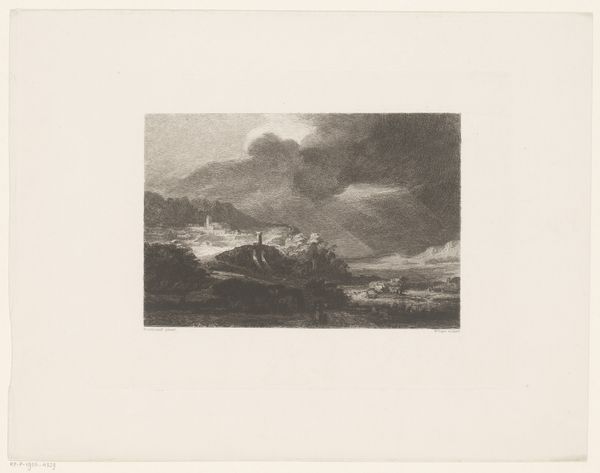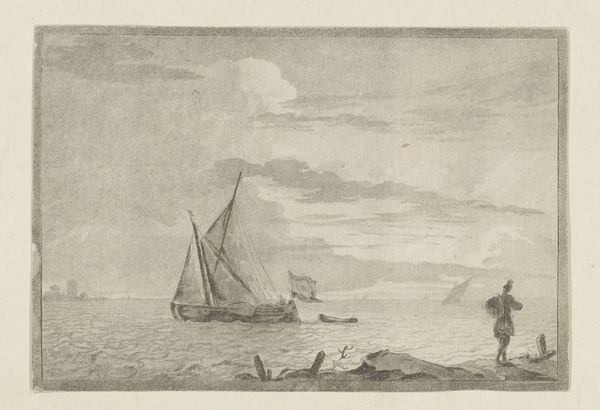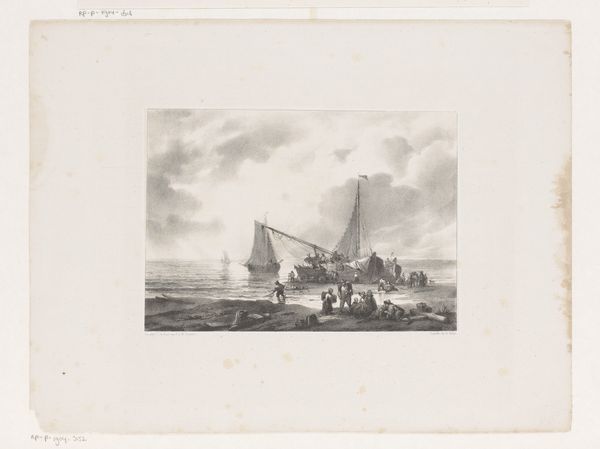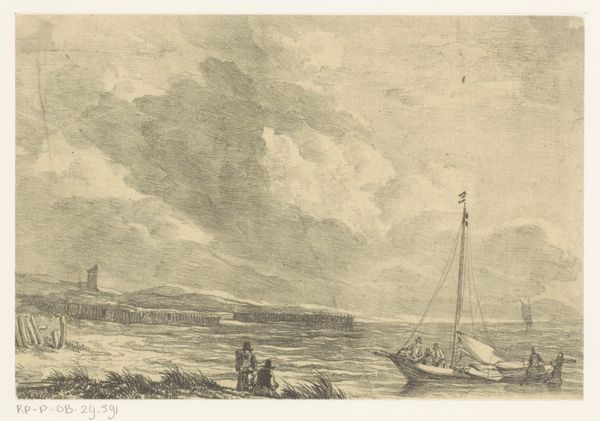
drawing, print, etching
#
drawing
# print
#
etching
#
landscape
#
monochrome
Dimensions: height 243 mm, width 345 mm
Copyright: Rijks Museum: Open Domain
This is a landscape with a windmill by Théodore Gudin, made with etching, a printmaking technique, sometime in the 19th century. The image is built through an intricate process, one line at a time. An etcher first coats a metal plate with a waxy, acid-resistant substance, then uses a fine needle to draw through this ground, exposing the metal. The plate is then submerged in acid, which bites into the exposed lines. The longer the plate stays in the acid, the deeper and darker the lines will be. Ink is then applied to the plate and carefully wiped away from the surface, remaining only in the etched lines. Finally, the plate is pressed onto paper, transferring the image. In this print, you see the etcher's hand at work. This careful, painstaking labor contrasts the relative ease of the windmill's labor. Etching was a popular way of reproducing images and making them more widely available in the 19th century. It’s a process that allowed artists to participate, however indirectly, in a burgeoning economy of mechanical reproduction.
Comments
No comments
Be the first to comment and join the conversation on the ultimate creative platform.
